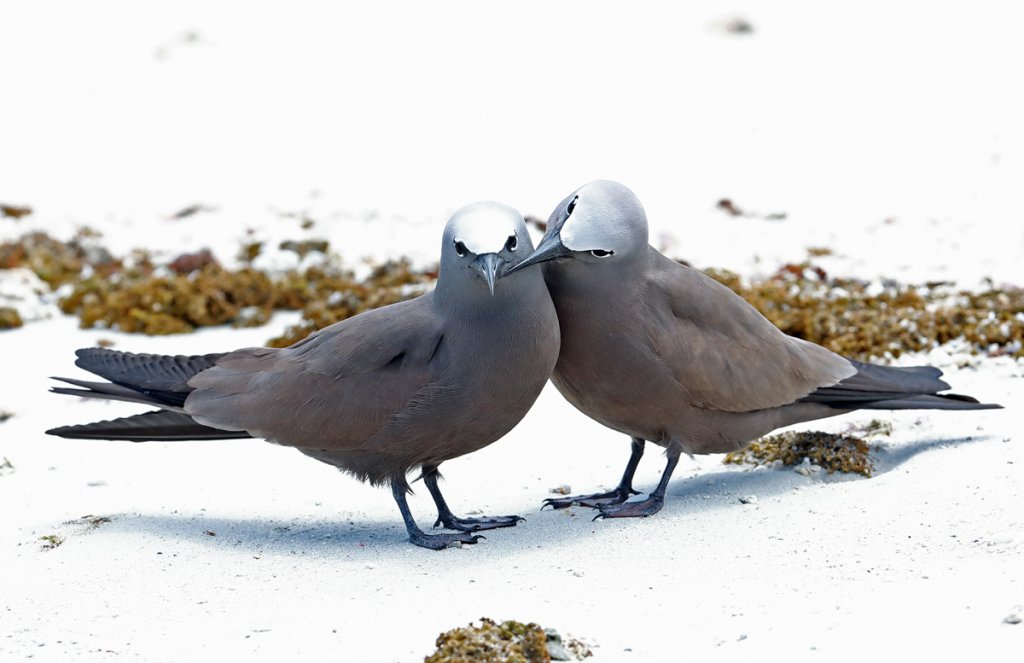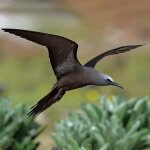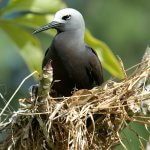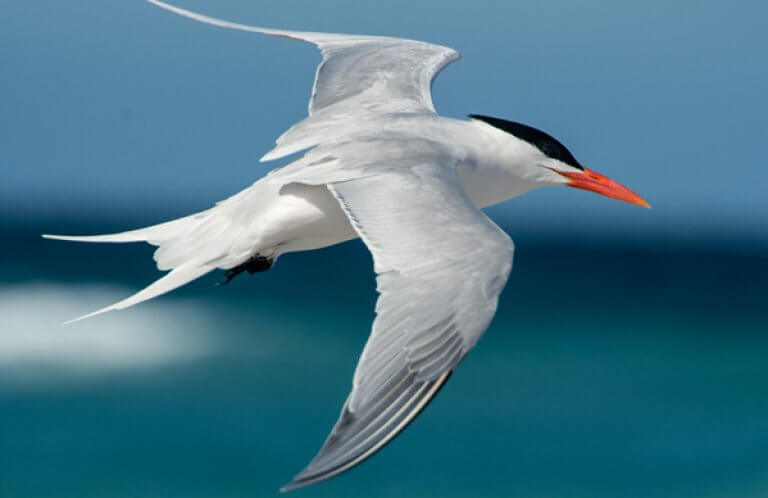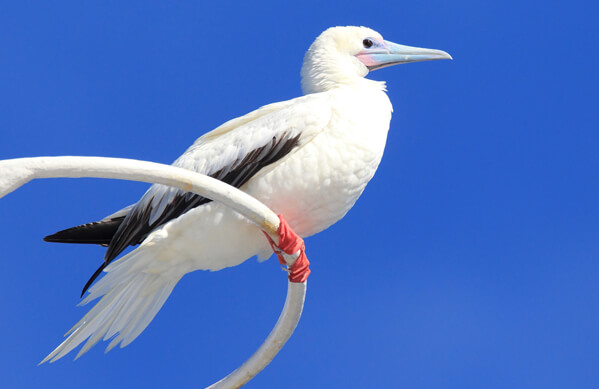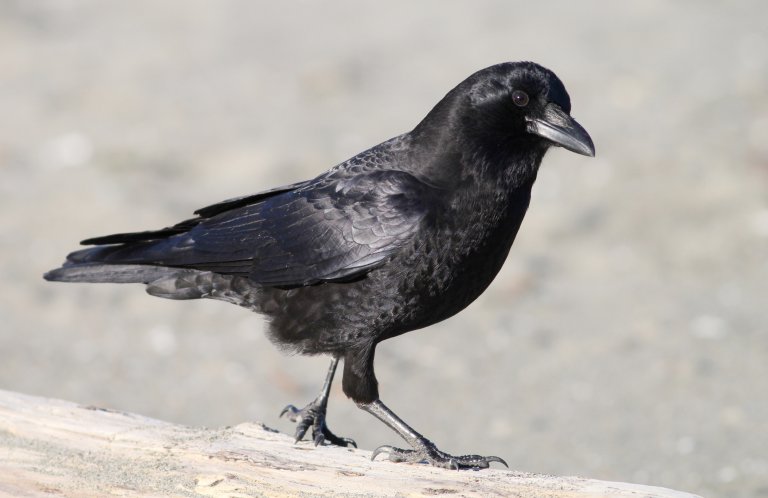About the Brown Noddy
The Brown Noddy is a type of tern that ranges widely across the tropical oceans of the world. It's the largest and most widespread of five noddy species, with all deriving their common name from the head-nodding displays they perform while on their nesting grounds. True to its name, this noddy is dark brown, with a whitish-gray forehead and crown – an opposite color pattern to most tern species, such as the Royal and Arctic Terns, which have white plumage with dark crowns. Another distinguishing feature of the Brown Noddy is its long, wedge-shaped tail, best seen in flight.
This seabird's genus name, Anous, is Ancient Greek for "silly" or "foolish." Its species name, stolidus, means "slow" or "dull" in Latin.
Inaccurate Assumptions
The disparaging species names and nicknames assigned to the Brown Noddy and other seabirds such as the Red-footed Booby and Laysan Albatross (also called the goony bird) refer to the apparent tameness of these species when approached on their breeding grounds. These assumptions reflect human prejudice — if the birds did not move out of harm's way, they must be stupid — rather than the fact that these birds have no natural predators on their nesting islands, so have no inborn wariness of humans or introduced species.
Songs and Sounds
The Brown Noddy gives a variety of low-toned, raucous vocalizations, sounding somewhat like an American Crow. It is particularly vocal on its nesting grounds.
Listen here:
Breeding and Feeding
Adaptable Nester
A colonial-nesting bird, the Brown Noddy breeds in groups that can number in the thousands of pairs. Each breeding season begins with birds congregating over colony sites by night. Then courtship behavior commences, consisting of ritualized movements (including the head-nodding that give this species its name), courtship feeding (female solicits food from the male), and mutual preening. Once pairs form and mate, the hunt for a nest site begins. The Brown Noddy is not fussy in its choice of nest location and has been recorded nesting on bare ground or rock as well as in trees and shrubs and on cliffs and human-made structures. Nest structures are highly variable as well, ranging from non-existent to platforms of sticks and vegetation. The female noddy lays a single egg, which both parents take turns incubating. Both parents also tend the chick after it hatches, feeding it by regurgitation until it's old enough to fly. Adults continue to care for their chick post-fledging until it has learned to hunt for its own food.

Surface Feeder
The Brown Noddy generally forages for food by day, but may also hunt for food on bright moonlight nights. It feeds while hovering just above the water, snatching small fish and squid from the surface or just below it. This species rarely plunge-dives. Sometimes the Brown Noddy will land on the water to seize prey. It forms large foraging flocks, sometimes mixed with other seabird species, and often congregates over schools of small fish driven close to the surface by an underwater predator.
Region and Range
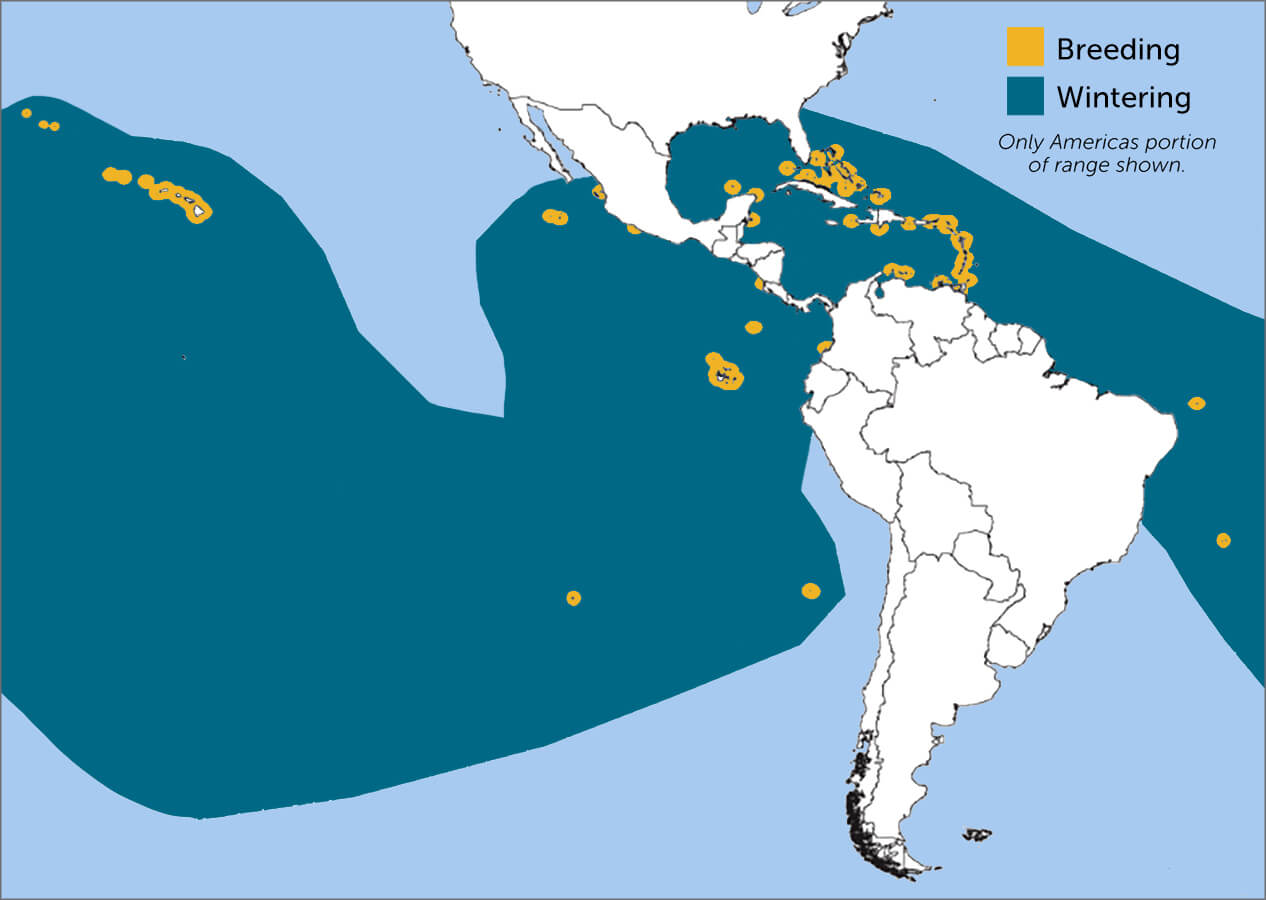
The Brown Noddy breeds on tropical and subtropical islands around the world, rarely straying out of that region's waters. In the United States, it breeds only in the Hawaiian Islands and on the Dry Tortugas of Florida. This seabird is rarely seen on or close to shore outside of these areas, but is sometimes driven inland by hurricane winds.
Four subspecies of Brown Noddy are recognized, one endemic to the Galápagos Islands.
Conservation

Help support ABC's conservation mission!
Habitat loss due to human development on nesting islands and introduced predators, including rats, cats, and snakes, are probably the greatest threats to the Brown Noddy throughout its wide range. Its nesting islands may also be at risk of disappearing, swamped by rising seas caused by climate change.
ABC's Marine Program is working with partners on multiple fronts to address threats to these oceangoing birds. We have support efforts by the National Fish and Wildlife Foundation, U.S. Fish and Wildlife Service, and other partners to build predator-proof fencing that establishes safe breeding zones for seabirds like the Brown Noddy on the Hawaiian islands of Kaua`i, O`ahu, and Molaka`i.
Get Involved
Policies enacted by the U.S. Congress and federal agencies have a huge impact on seabirds. You can help shape these rules for the better by telling lawmakers to prioritize birds and bird-friendly measures. To get started, visit ABC's Action Center.
Plastics pose a deadly threat to seabirds around the world. You can help seabirds by reducing your daily use of plastics. To learn more and get started, visit our Plastics page.
American Bird Conservancy and partners are creating predator-free nest sites for vulnerable seabird species, reducing fishery impacts, and much more. This is a monumental undertaking, requiring the support of many, and you can help by making a gift today.





































